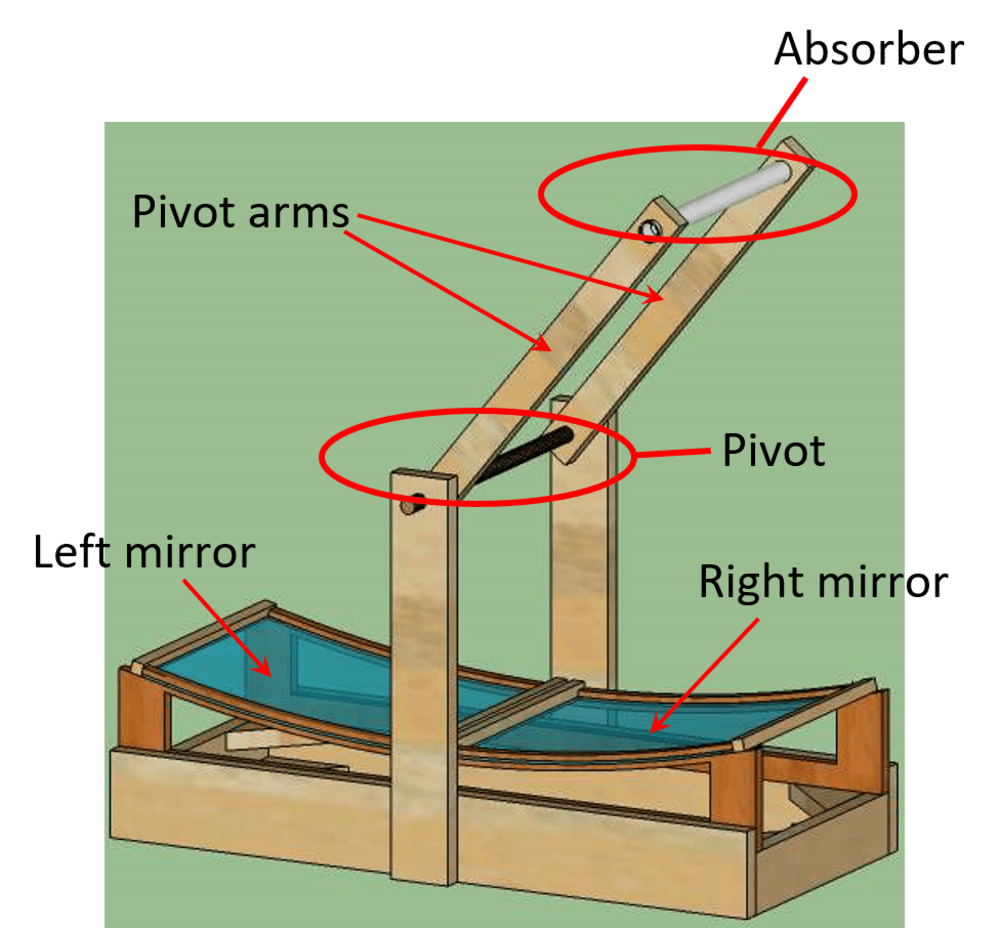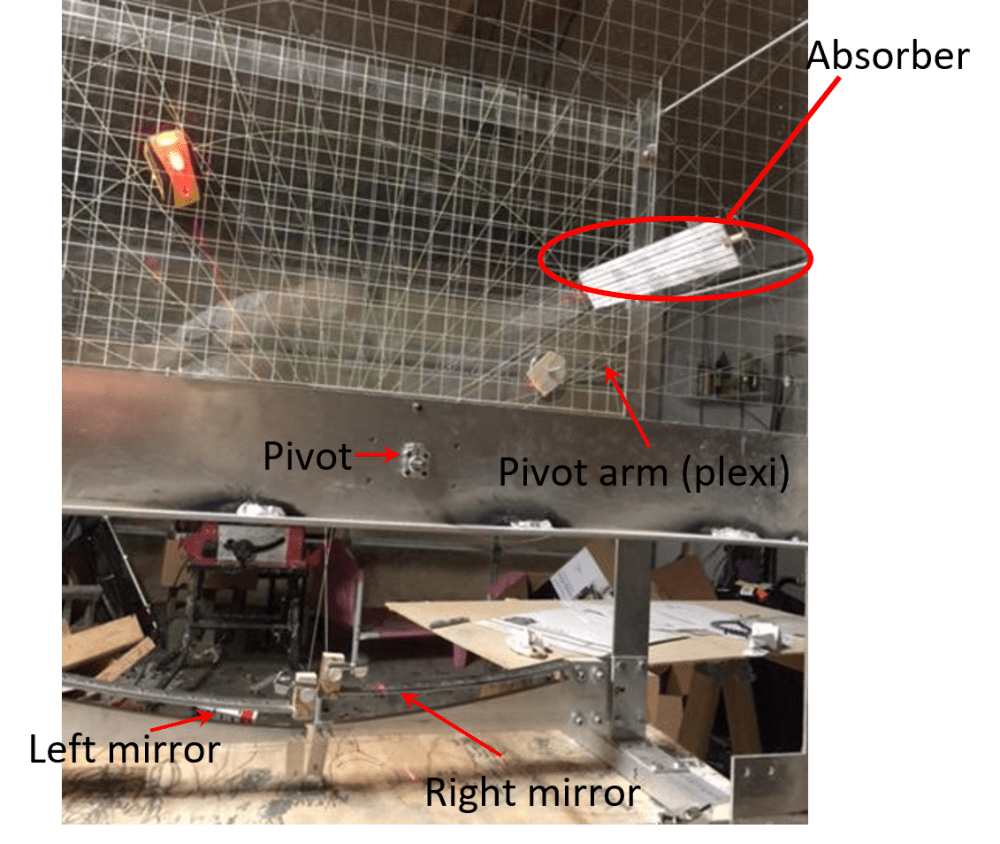
A new linear solar collector has been developed and patented that promises to be a less expensive replacement for parabolic trough collectors. Parabolic trough collectors suffer from the difficulty of maintaining mirror orientation for a very large mirror that can be subjected to significant winds. This new patented design uses a fixed mirror and instead moves a small absorber to track reflected light off of the fixed mirror. This allows for significant cost savings in structural components, as well as reduced maintenance cost due to broken mirrors.
The collector is comprised of two slightly curved stationary mirrors slightly curved into a shallow trough shape, oriented in an east-west direction, with the mirrors meeting at the middle of that trough.
The key observation is that as the sun moves, there's a natural circle of focus that an absorber can follow. When the sun moves to the south, the absorber is rotated farther to the north along this circle. To maintain sharp focus, similar to parabolic troughs, the mirrors need to flex. This can be done by coupling motion of the receiver with the flexing of the mirrors, with cabling as shown. See Illustration #1.
The simple design has already been prototyped and proven out on a small scale, as shown in illustration #2 and illustration #3. Here the goal was to show that a design of sufficient precision could be easily constructed. A concentration ratio of 40 suns was achieved, significantly less than the 60 suns theoretically possible. However, because one can use a simple back reflector to double this concentration ratio, this early prototype already compares favorably to the 80 suns typical in parabolic trough designs.
There is an incidence angle range where the fixed mirror maintains this high concentration ratio. For the simpler design shown in figures, this range is 60 degrees. For a slightly more complicated design being developed with 4 cables instead of 2, the range is 90 degrees. This will allow for a full 8 hours of well-concentrated sunlight to be absorbed all year long with the east-west trough tilted south in the same manner as PV arrays.
The key components of the design should be relatively straightforward to manufacture. The cam element used to sync absorber motion to mirror focusing was successfully made on a punch press. The support arms for the mirror will likely be laser cut. All other components, metal sheeting, laminate, support structure, are standard components.
The design can then plug and play as an alternative design into existing parabolic trough plants, taking advantage of existing expertise and design experience with power generation.
There is clearly an existing market for power generation. Concentrated solar fields are presently being built in favorable areas such as the southwest of the United States and southern Spain. These fields also allow for energy storage in the form of heat, something that PV arrays sorely lack. This mitigates the unstable nature of solar energy input, and makes concentrated solar power a viable possible energy of the future.
-
Awards
-
 2018 Top 100 Entries
2018 Top 100 Entries
Like this entry?
-
About the Entrant
- Name:Andy Lorenz
- Type of entry:individual
- Software used for this entry:Python, Autodesk Inventor
- Patent status:patented








